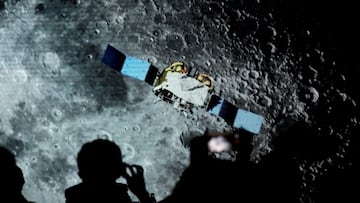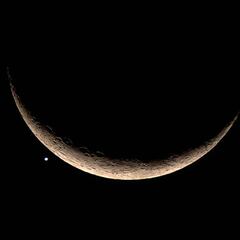Unpublished discovery of water on the Moon
Scientists have analyzed the samples collected by the Chang’e-5 probe and have discovered some impact crystals from the moon that contain water inside.

It’s been two years since China successfully completed the Chang’e-5 mission. The probe reached the Moon and obtained the first samples from the satellite since the Soviet Lunik 24 mission in 1976. The group of experts in charge of its analysis have shared their results, and it seems that they have found one of the great mysteries that the scientific community has been questioning about the Moon: where does the water it contains come from?
Glass crystals can hold a lot of water
The samples collected by the Chang’e-5 probe, in the surroundings of Mons Rümker, are impact crystals that contain water inside. These have “homogeneous chemical compositions and smooth surfaces,” the experts have specified. One of the main characteristics of the impact glass crystals of the Chang’e-5 mission is the abundance of water they can retain.
This was reported by experts from the Chinese National Academy of Sciences (CAS) and the two European collaborators who have joined the project in an article published in the journal Nature Geoscience. They have also pointed out that the water contained in these crystals comes from the solar wind and that they “acted like a sponge to cushion the lunar surface water cycle”.
READ ALSO:
- Five planet alignment: When is it and what is the best way to watch the planetary parade?
- How to watch the approach of ‘city killer’ asteroid 2023 DZ2
Lunar-water discovery from China's Chang’e 5 rover — the moon’s surface contains water embedded in microscopic glass beads that one day could help astronauts produce drinking water, breathable air and rocket fuel. @eniiler reports:https://t.co/kk7mapAAzt
— Micah Maidenberg (@MicahMaidenberg) March 27, 2023
Multiple water reserves on the Moon?
Related stories
Professor Sen Hu of the Chinese Academy of Sciences, who led the research, said that these findings "indicate that impact crystals on the surface of the Moon and other airless bodies in the Solar System are capable of storing water derived from solar winds and releasing it into space.”
Until now, the different missions designed to study the Moon had been able to confirm the presence of structural water or in the form of ice on the satellite. However, with this new discovery, the scientific community already assumes that there may be multiple water reserves yet to be identified. And that these have the capacity to retain water in the satellite, and that it does not escape into space.


